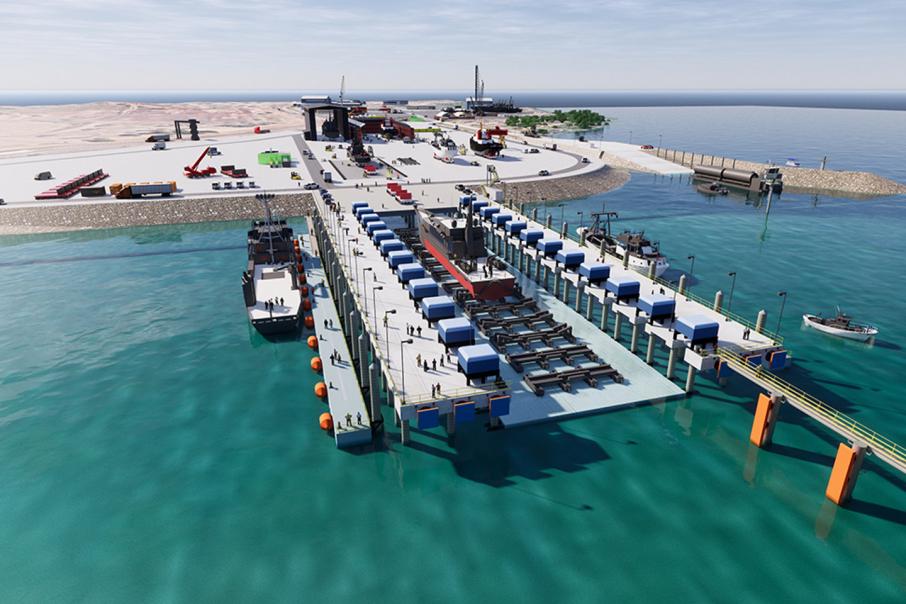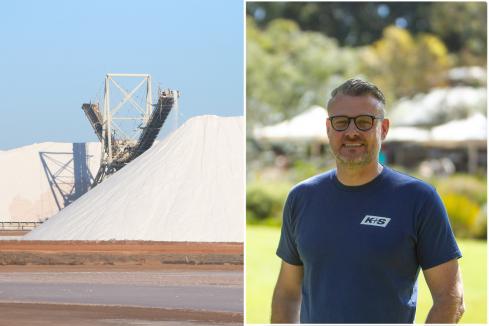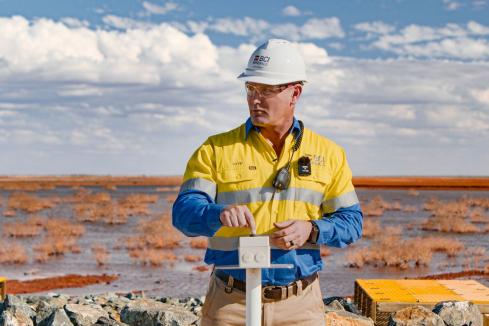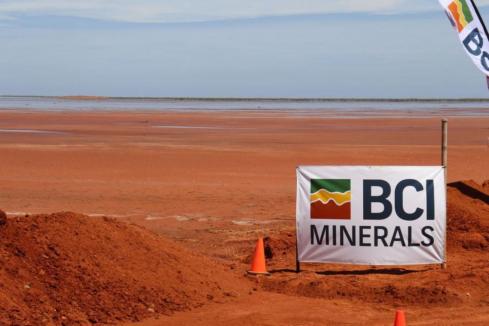Profit-seeking projects, rather than community infrastructure, have attracted concessions through the Northern Australian Infrastructure Facility, amid questions over public benefit.


When the $5 billion Northern Australian Infrastructure Facility was announced in the 2015 budget, then federal treasurer Joe Hockey promised ports, railways, pipelines, and power generation to advance the country’s north.
In the six years since, the facility’s investments have dramatically outstripped that initial scope.
Much of the cash allocated so far has flowed as concessional loans for mining and agribusiness projects, funding plants and equipment.

But it’s an open question whether the best strategy for regional improvement is to effectively subsidise capital for private developments.
It’s also unclear how much public benefit is generated from NAIF’s investments, and exactly how much project shareholders win compared to other stakeholders.
A good comparison is Infrastructure Australia’s priority lists.
The theme of IA’s selections is mostly common-use infrastructure, with residents and many businesses able to benefit from an upgraded highway or new phone towers.

NAIF’s approach has included supporting individual projects to stack up, however.
That means otherwise-profitable projects are being boosted by taxpayer support, or subeconomic projects are getting pushed over the line by subsidies.
The Productivity Commission warned in 2018 that similar financing schemes had performed poorly in the past, and funds like NAIF would need to be reviewed early in their operation to make sure they did not merely benefit project proponents.
University of Western Australia professor David Gilchrist said he was not convinced there was a broader economic strategy behind the financing decisions.
“If the project is not bankable, why does the taxpayer have to stick their hand in their pocket?” he said.
“How do you compare those projects with others that might be undertaken?
“I don’t think an unbankable mine is a good outcome for everyone involved.
“Some of the projects need loans from the government because they’re not bankable.”
Professor Gilchrist said the conversation around regional development should be extended further to investment in social infrastructure for aged care, education, health care and disability services.
Those would bring clear social benefits and long-term employment in regional areas, he said.
Professor Gilchrist cited the case of a disability services organisation that needed to use caravans to house workers because there was no accommodation available in the north-west.
He said it may be hard to enforce requirements around local employment or community benefit once a project was built, even if proponents pledged to hit targets.
“There’s no way [of] walking away from these projects when they’re developed,” Professor Gilchrist said.
Economics Consulting Services founder Murray Meaton said taxpayers would be carrying some of the risk from the projects.
“We’re talking about investing in a high-risk region, the projects are clearly marginal and need an injection of government equity to get up,” Mr Meaton told Business News.
“By helping marginal projects you’re diverting funds from more profitable projects.
“You’re prejudicing the allocation of capital by biasing projects that would not get up otherwise.
“Once projects have come to rely on low interest rates or subsidised capital, they have built in investment and employment that’s very hard to take away.”
An April 2019 audit of NAIF also warned it would need to improve transparency about public benefit and measure its realisation.
Only headline numbers on public benefit are made available by NAIF, which cites commercial in confidence restrictions, in contrast to Infrastructure Australia, which generally offers breakdowns.
This makes it difficult to confirm how realistic public benefit promises are.
“Every project developer is going to make their project look attractive if they need to raise capital,” Mr Meaton said.
“There’s always a risk they will perhaps overstate the benefit.”
Professor Gilchrist said more work would need to be done to track realised benefit from projects to build a stock of knowledge for the fund.
Profitable projects?
A series of projects that appeared to have been profitable without concessional loans has received support for plant and equipment.
While not in the spirit of what was initially proposed by Mr Hockey, NAIF’s investment mandate has broad guidelines, so it can invest to establish or enhance business activity and increase economic activity in a region.
Fundraising for Sheffield Resources’ Thunderbird mineral sands project west of Derby has been under way for at least four years.
Sheffield secured two debt facilities totalling $95 million from NAIF in September 2018, after signing a commercial loan facility with Taurus Mining Finance Fund worth $US200 million a year prior.
The NAIF loan was at a concessional rate, and over longer term than the private financing.
Sheffield has said the NAIF concessional loans enabled it to build, own, and operate power generation and accommodation facilities (reducing operating costs) that otherwise would have been outsourced.
The loans would also fund construction of ship-loading assets at the Port of Derby and upgrading mine site roads.
The company’s 2017 bankable feasibility study said Thunderbird would have been in about the top third of operations globally in revenue-to-cost ratio, which made it internationally competitive.
It’s unclear, therefore, whether taxpayer support was necessary to get the project across the line.
“NAIF funding allows Kimberley Mineral Sands to own and operate the power station, reducing the costs of operations and adding to the economic viability of the project,” a Sheffield spokesperson said.
“It also allowed Sheffield Resources, as an Australian-owned company, to maximise its financial position in the project for the benefit of its local shareholders, employees and other stakeholders.”
In January 2021, Chinese business Yansteel acquired 50 per cent of the project, creating the Kimberley Mineral Sands joint venture.
When asked whether the power station would be available for common use, the spokesperson said the remote location meant it was unlikely there would be other users, so it would be designed to supply Thunderbird’s needs.
The full cost-benefit analysis would not be made public, nor would NAIF’s loan terms. However, NAIF documents promise a public benefit of $487 million (from the project, rather than the loan) over a 42-year mine life.
The spokesperson said the operational workforce would be drive-in, drive-out from local communities, with 200 jobs likely during operations.
The Thunderbird bankable feasibility study had forecast post tax net present value – effectively the return to investors – of $620 million.
NAIF’s December 2020 pledge of $450 million for BCI Minerals’ Mardie salt and potash project is another example.
BCI’s biggest shareholder is Kerry Stokes’ private vehicle, Wroxby, holding about 40 per cent of the register at October 2020.
The NAIF loan would support construction of evaporation ponds, two processing plants, supporting infrastructure and a port, the announcement said.
BCI’s definitive feasibility study shows the port’s development would cost about $197 million and was to be built and operated by BCI.
The Pilbara Ports Authority would own and manage the port, to be called Cape Preston West, and it would be a multi-user facility, BCI said.
The plan includes a two-kilometre trestle jetty and dredging.
Mardie salt would be one of the lowest-cost suppliers of salt into the Asian market if potash production is applied as a by-product credit, BCI’s feasibility study said.
The study forecast the project’s net present value would be about $1.1 billion.
NAIF’s most recent decision was to offer $140 million for Australian Potash’s Lake Wells development.
The company has committed that about 30 per cent of construction value will be spent with businesses in northern Australia, and 20 per cent with indigenous businesses.
Similarly, the Lake Wells concessional loan was despite a 2019 feasibility study into the project finding it would be “comfortably [in the] first quartile of the industry cost curve” of potash production around the world.
That means it was already set to be one of the world’s most profitable potash suppliers.
“The NAIF facility offers a long tenor of 17 years, and an interest rate that improves the opportunity for attractive returns to equity invested in the project,” Australian Potash managing director Matt Shackleton said.
A NAIF spokesperson said the loans were permitted under the terms of the mandate and were not chosen ahead of community infrastructure, because decisions were made on a case-by-case basis.
NAIF sought to encourage debt and equity support for projects through crowding-in, by accepting higher risk than commercial lenders in sectors that struggle to raise finance.
“There have been examples where NAIF’s early support for a project has allowed the proponent to source finance from elsewhere,” the spokesperson said.
“As a development financier with a series of debt tools, our focus is to assist projects but also ensure the return of the government’s funding.”
They added that projects could bring community benefit whether they were public infrastructure or private developments.
Caution
The Productivity Commission has issued more than one caution on concessional financing.
“The continued growth and development of project financing vehicles has the strong potential to distort the allocation of resources, as well as imposing hidden costs to taxpayers through non-repayment risks and concessional financing subsidies,” the commission said in its latest ‘Trade and Assistance Review’.
“Budgetary support advantages recipient firms and industries over those that do not receive support.”
In another report, it said the establishment of a national infrastructure bank: “Would create pressure to fund projects that would otherwise not pass a cost–benefit assessment, simply because there is capital available at any given time”.
The International Monetary Fund has said subsidies were best reserved for investments with very high social return relative to private returns, and where private returns were below the rate of interest.
“In practice, governments have often invested in or subsidised private sector activities. Externalities are often cited to provide unconditional justification for public investments, cost-benefit analysis of public investments tends to analyse one project rather than a range of alternative projects, and analysis of whether the private sector has an incentive to undertake investments is often not done,” the IMF said.

The planned CDU Darwin CBD campus. Photo: CDU
Shipwreck
Among non-resources projects financed by NAIF were a high-performance sports centre for the North Queensland Cowboys NRL team, and a bid to build a Charles Darwin University campus in Darwin CBD as part of a city deal.
Another example was a $300 million concessional loan for construction of a ship lift in Darwin.
The $400 million project was an election promise by the Northern Territory’s Labor administration, which will chip in the rest of the funds.
It has sparked some debate, particularly because all revenue will reportedly be collected by designated operator Paspaley Pearling Company, which will move from its existing site to the new ship lift.
Charles Darwin University professorial research fellow Rolf Gerritsen said Paspaley would have a monopoly on the lift, as other parties would need to negotiate for use.
This would mean other operators have a higher cost base, he said, because they would pay Paspaley to use the lift.
“I won’t expect any other companies to do work there,” Professor Gerritsen said.
“Whatever they pay Paspaley would be an extra cost on the work, so it wouldn’t be competitive.”
The NT government has pitched the ship lift as a site for naval maintenance work.
“While Defence has no stated requirement for a ship lift in Darwin, the new facility will provide options to support Navy vessels homeported in Darwin, along with forward deployed or visiting vessels,” a spokesperson for the Department of Defence told Business News.
“Darwin has a current role as a maintenance provider in support of the Navy patrol boat fleet.
“This role will be enhanced under the regional maintenance model being introduced to support the new vessels that will operate out of Darwin.
“Darwin is not considered a shipbuilding hub but is one of four key regional maintenance centres for Navy.”
A WA industry source told Business News the Darwin ship lift would likely be too small to take work away from WA’s Henderson precinct.
Professor Gerritsen said the lift would be competing against ship maintenance operations in the near north, such as Singapore.
“This is classic field of dreams economics ... build something and they will come,” he said.
Professor Gerritsen said he was familiar with the early cost-benefit analysis of the ship lift, which had been highly critical of the facility.
A spokesperson for the NT government said a report into the ship lift by ACIL Allen was not publicly available, and no agreements had been finalised for use of the facility as of January.
“Commercial negotiations and procurement activities relating to the ship lift project are currently under way,” the spokesperson said.
“The release of the ACIL Allen report will be considered after the conclusion of those matters.
“The NT government provided a range of information as part of its assessment submission to NAIF, a large part of which is subject to commercial confidentiality.”
Paspaley did not respond to a request for comment.
A spokesperson for Infrastructure Australia said NAIF consulted IA on investment decisions of more than $100 million, as required under its mandate direction, usually with regard to technical advice on cost-benefit analysis.
“As the NAIF investment decision on the Darwin ship lift project exceeded $100 million, we were consulted on the decision,” the IA spokesperson said.
“We have not conducted an evaluation of the Darwin ship lift project business case at this time, and it is not currently under evaluation.”
The ship lift does not appear on IA’s priority list.
When asked by Business News if any of the projects funded by NAIF had been recommended as priorities by IA, the spokesperson said: “To our knowledge, none of the project business case evaluations completed to date [by IA)] or currently under way are seeking NAIF financing or are subject to NAIF financing commitments at this time.”
In July 2020, NAIF’s mandate was extended from July 2021 to July 2026, while in December it was expanded to allow equity investments, have a higher risk appetite, and to broaden the definition of public benefit.














